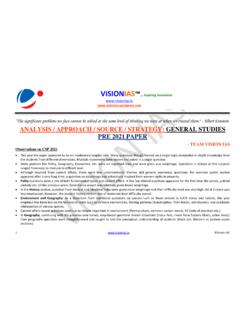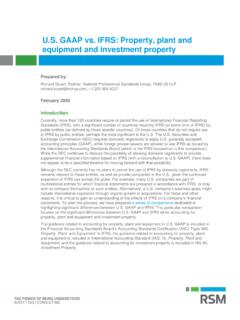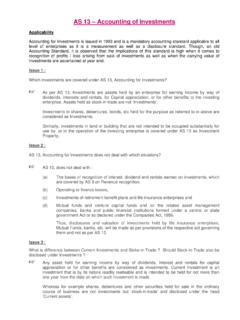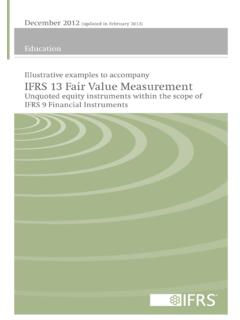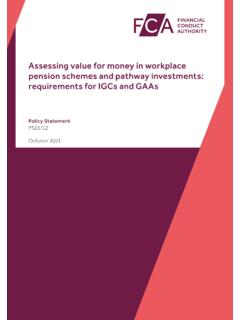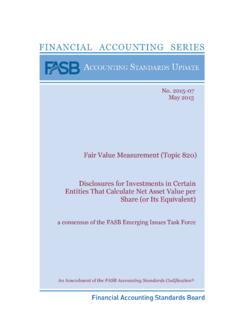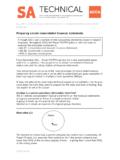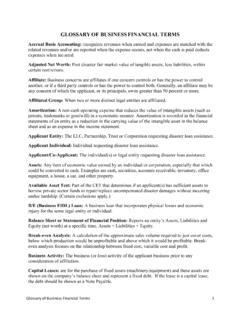Transcription of INTERNATIONAL RELATIONS
1 1 DELHI | PUNE | HYDERABAD | AHMEDABAD | JAIPUR | LUCKNOW | CHANDIGARH 8468022022 INTERNATIONAL RELATIONS Table of Contents 1. INDIA AND ITS NEIGHBOURS _____ 2 India China _____ 2 India-Bangladesh _____ 6 India Nepal _____ 7 Indo-Nepal Territorial Dispute _____ 7 Nepal China Connectivity Deal _____ 9 India-Sri Lanka _____ 9 India-Maldives _____ 10 India Afghanistan _____ 12 Afghan Peace Process _____ 12 India Pakistan _____ 14 Terror Activities and Mutual Distrust in India-Pakistan RELATIONS _____ 14 Gilgit Baltistan _____ 15 Development Projects in Pakistan Occupied Kashmir _____ 16 Regional Cooperation in South Asia ___ 17 SAARC Revival _____ 17 Bay of Bengal Initiative for Multi-Sectoral Technical and Economic Cooperation (BIMSTEC)19 Trans-boundary River Water Management20 India s Energy Cooperation with Neighbouring Countries _____ 22 2.
2 INDIAN OCEAN REGION AND INDO-PACIFIC _____ 24 India and the Indo-Pacific _____ 24 India and QUAD _____ 26 Rise of the Minilaterals _____ 27 3. SOUTH EAST AND EAST ASIA _____ 29 India-Myanmar _____ 29 India South Korea Defence RELATIONS __ 30 India-Taiwan _____ 31 India-Japan RELATIONS _____ 32 India-Australia RELATIONS _____ 33 India-Vietnam _____ 34 4. WEST ASIA/MIDDLE EAST _____ 36 Israel-Palestine _____ 36 Abraham Accord _____ 37 India UAE _____ 38 India Saudi Arabia _____ 39 Chabahar-Zahedan Railway Line _____ 40 5. AFRICA _____ 43 India Africa _____ 43 6. EUROPE _____ 46 RELATIONS _____ 46 India-UK RELATIONS _____ 47 India France _____ 48 India-Germany _____ 49 Brexit: UK Leaves the European Union _ 50 7. RUSSIA _____ 53 India Russia _____ 53 8. USA_____ 55 India US _____ 55 9.
3 INDIA-CENTRAL ASIA _____ 57 India-Central Asia Dialogue _____ 57 10. LATIN AMERICA AND THE CARIBBEAN 59 India-MERCOSUR _____ 59 India-CARICOM _____ 59 11. IMPORTANT INTERNATIONAL /REGIONAL GROUPS AND SUMMITS _____ 61 Role of WHO _____ 61 World Health Assembly (WHA) _____ 63 Dispute Settlement System of WTO __ 63 United Nations Human Rights Council 66 Non-Aligned Movement Summit ____ 68 India Elected Non-permanent Member of UN Security Council (UNSC) _____ 69 UN Peacekeeping Forces _____ 70 United Nations Convention on the Law of the Sea (UNCLOS) _____ 71 Nuclear Non-Proliferation Treaty at 50 73 Open Skies Treaty _____ 74 INTERNATIONAL Criminal Court _____ 75 12. INTERNATIONAL EVENTS _____ 78 South China Sea _____ 78 New Security Law in Hong Kong _____ 79 13. MISCELLANEOUS _____ 80 Indian Diplomacy _____ 80 Indian Foreign Policy in A Changing World80 India s Soft Power _____ 81 Medical Diplomacy _____ 83 New and Emerging Strategic Technologies Division _____ 84 Kashmir Issue at Global Forums _____ 85 E-Diplomacy _____ 87 Collective Action in the Times of COVID88 Data Free Flow with Trust (DFFT) ____ 89 2 8468022022 DELHI | PUNE | HYDERABAD | AHMEDABAD | JAIPUR | LUCKNOW | CHANDIGARH 1.
4 INDIA AND ITS NEIGHBOURS INDIA CHINA Why in news? India and China are engaged in an eight-month standoff at LAC in Eastern Ladakh. Both the countries are also engaged in military and diplomatic talks to resolve the border dispute. About the current standoff Chinese soldiers crossed the LAC around the Galwan River valley during May 2020. There have been reports of Chinese soldiers having moved into Indian territory at multiple locations in eastern Ladakh across the LAC leading to high levels of tension between India and China. (see the map). In the events that followed at least 20 Indian soldiers were killed in a clash with Chinese forces. It was the first deadly clash in the border area in at least 45 years. Alongside, both agreed to maintain dialogue and communication through military and diplomatic channels.
5 More than 8 rounds of talks were completed and talks are still continuing. Both sides agreed to earnestly implement the important understandings reached by the leaders of the two countries, not to turn differences into disputes, and jointly safeguard peace and tranquillity in the border area. However, border remains tense as reports say that China is upgrading and installing radars swiftly along the LAC. India- China Border Dispute The border between India and China is not clearly demarcated throughout and there is no mutually agreed Line of Actual Control (LAC). The LAC is the demarcation that separates Indian-controlled territory from Chinese-controlled territory. India considers the LAC to be 3,488 km long, while the Chinese consider it to be only around 2,000 km. The LAC is divided into three sectors, viz.
6 Western, Middle and Eastern. o The boundary dispute in the Western Sector (Ladakh) pertains to the Johnson Line proposed by the British in the 1860s that extended up to the Kunlun Mountains and put Aksai Chin in the then princely state of Jammu and Kashmir. India used the Johnson Line and claimed Aksai Chin as its own. China, however, do not recognise it and instead accepts McDonald Line which puts Aksai Chin under its control. o In the Middle Sector (Himachal Pradesh and Uttarakhand), the dispute is a minor one. Here LAC is the least controversial except for the precise alignment to be followed in the Barahoti plains. India and China have exchanged maps on which they broadly agree. o The disputed boundary in the Eastern Sector (Arunachal Pradesh and Sikkim) is over the McMahon Line (in Arunachal Pradesh) decided in 1914 in a meeting of Representatives of China, India, and Tibet in Shimla.
7 Though the Chinese representatives at the meeting initiated the agreement, they subsequently refused to accept it. The Tawang tract claimed by China was taken over by India in 1951. Possible Reasons for Current standoff It is always challenging trying to interpret China s intentions. Various experts cite different reasons some of which are as follow- Border Dispute Settlement Mechanism A series of five agreements signed between India and China to address disputes arising over the LAC: 1993 Agreement on the Maintenance of Peace and Tranquility along the LAC 1996 Agreement on Confidence-Building Measures in the Military Field Along the LAC 2005 Protocol on Modalities for the Implementation of Confidence-Building Measures in the Military Field Along the LAC 2012 Agreement on the Establishment of a Working Mechanism for Consultation and Coordination on India-China Border Affairs 2013 Border Defense Cooperation Agreement.
8 These agreements provide a modus operandi for diplomatic engagement at the military and political levels, as well as a set of status quo commitments both sides can return to in case of escalation. 3 DELHI | PUNE | HYDERABAD | AHMEDABAD | JAIPUR | LUCKNOW | CHANDIGARH 8468022022 Infrastructure Development along the LAC: In the past decade, India has worked hard to strengthen its position on the border and its presence along the LAC. Dalut Beg Oldie (DS-DBO road) in the northern tip of the western sector greatly facilitates the lateral movement of Indian forces along the western sector, reducing travel time by 40%. Shadow of Dokalam Episode: In a broader context, current confrontation is also attributed to the 2017 China-India standoff at Doklam.
9 Reorganisation of Jammu and Kashmir: China had earlier also protested against the formation of new Union Territory of Ladakh and accused India of trying to transform the LAC unilaterally. Global backlash against China for mishandling of COVID-19: India also supported a Resolution at the World Health Assembly demanding a fair probe into the origin of Coronavirus. Also, India has recently took over as the chair of the WHO executive Board. Signs of new Chinese aggressiveness: along the Sino-Indian border is one of the elements of China s new adventures including o the new security law Beijing has enacted to control Hong Kong, o the enunciation of new administrative structures in the South China Sea, o the new language on Taiwanese reunification used during the May 2020 National People s Congress plenary session in Beijing.
10 India s steps in Indo-Pacific: India s participation in Quadrilateral Security Dialogue (Quad), with strong maritime component, proposals like Supply Chain Resilient initiative are seen by China as potential anti-Chinese alliance of democracies aimed at containing it and checking its maritime rise in the Indo-Pacific. Other Issues between India and China Chinese Initiatives: There are many Chinese initiatives that India is suspicious about- o Belt and Road Initiative (BRI): India boycotted BRI on issues of sovereignty (as China-Pakistan-Economic-Corridor part of BRI, passes through Pakistan Occupied Kashmir) and other concerns over transparency, debt burden issues. o Increasing presence in Indian Ocean: Chinese policy of building ports and naval bases around India's maritime reaches such as Cocos Island in Myanmar, Chittagong in Bangladesh, Hambantota (Sri Lanka), Marao Atoll (Maldives) and Gwadar (Pakistan) is seen as Chinese encirclement of India.






